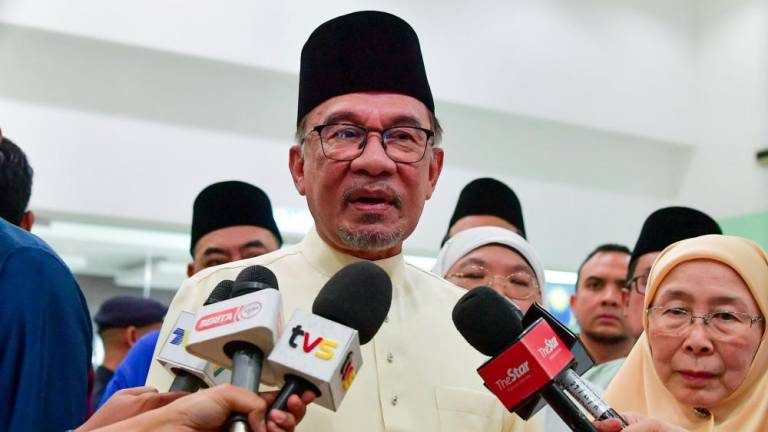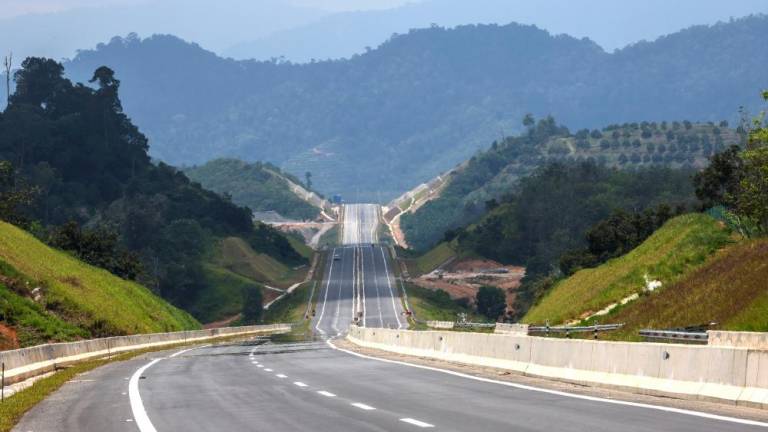KUALA LUMPUR: The system on climate change simulation and information developed by the National Water Research Institute of Malaysia (Nahrim), namely the Nahrim-Hydroclimate Data Analysis Accelerator (N-HyDaa) is able to help the country’s preparedness in reducing the risk of flood disasters.
Nahrim director-general Datuk Dr Md Nasir Md Noh said the system, which applied Big Data Analytics (BDA) technology, was able to provide forecast information, especially rainfall for the long term, up to the year 2100.
He said the projection generated from the hydroclimate model could be optimised and could help the country prepare and strive to reduce the risk of flood disasters such as the forecast of extreme rain episodes.
However, the projection information serves as a guide and should be read and analysed together with the latest weather and rainfall forecast information issued by the Malaysian Meteorological Department as well as flood forecasts and warnings issued by the Department of Irrigation and Drainage.
“For example, based on one of our hydroclimate projection models displayed through N-HyDaa, there were projections of relatively heavy rainfall episodes in the northern part of the country, including in the Gunung Jerai area from Aug 2 to 29.
“Although this model projected Aug 23 to 29 as the expected period of the heaviest weekly rainfall compared to the actual extreme rain incident that occurred in Gunung Jerai on Aug 18, in the context of disaster preparedness macro planning, we can make appropriate initial preparations to reduce the risk of disaster.
“This is especially to prevent death and serious damages,” said Md Nasir, who was a panellist at the webinar on Water Surge Phenomenon at Ecotourism Areas today.
Another panellist was Regional Humid Tropics Hydrology and Water Resources Centre for Southeast Asia and the Pacific deputy director, Dr Norlida Mohd Dom, while the Forestry Department’s director of Forest Eco-Parks and State Park Forests, Mohd Yussainy Md Yusop, acted as the moderator.
Md Nasir said in general, the N-HyDaa system has great potential to assist decision-makers and stakeholders in managing disaster risk based on adaptation to climate change to increase the country’s climate resilience.
Apart from that, he said N-HyDaa could also display a visualisation of the expected distribution of rainfall until the end of this century based on the hydroclimate model.
When asked about the extreme heavy rainfall episodes that have occurred in the country in recent times, Md Nasir said it was due to the climate change phenomenon happening around the world.
In fact, the latest report of the Intergovernmental Panel on Climate Change (IPCC) stated that a temperature increase of 1.1 degrees Celsius has been recorded since the pre-industrial era and is expected to continue to increase to 1.5 degrees Celsius to 2 degrees Celsius by 2030 to 2040 if no measures are taken to reduce the world’s greenhouse gas emissions.
“This temperature increase will definitely have a negative impact globally and our country is no exception with the most significant impact in Malaysia being the change in the pattern of the hydrological cycle and the monsoon season.
“For example, in the context of future floods, the earth’s warmer temperatures will increase and accelerate the evaporation process, increasing the ability of the atmosphere to retain more water vapour which will then cause more extreme rainfall incidents and in turn increase the risk of massive floods over time,” he said.
Meanwhile, Mohd Yussainy said the monsoon transition phase was expected to begin on Sept 24 and continue until early November which marks the end of the Southwest Monsoon which began on May 19.
Therefore, he reminded the public to be vigilant during the period as thunderstorms have the potential of causing flash floods and damage to weak structures.
-Bernama














